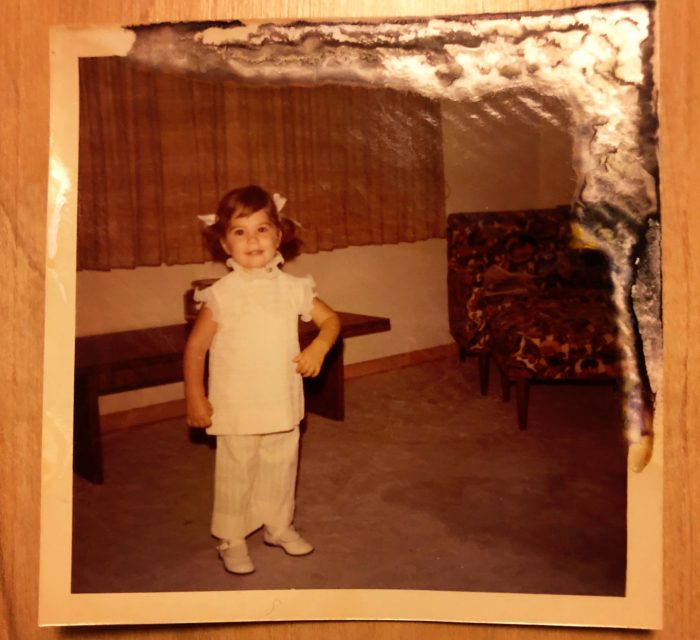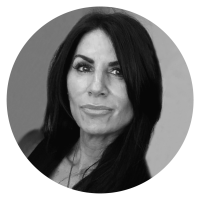It’s interesting how holding onto our own pain and suffering leads us to those who are also in pain and suffering.
My pain started at the ripe young age of five.
I grew up with a father who was angry and unpredictable. I never knew when the next slam of a door or verbal attack was about to happen. Just the sight of me could send my father into a fury.
My mother had what they called in the 70s, the “Donna Reed” approach to life. The “Just put on your apron. There’s nothing to see here. We’re a happy family,” way of dealing with conflict.
My own approach was isolation—not by choice, it was a matter of survival.
When I turned 13, I knew something was wrong. I was in constant fear and wishfully begging my mother to keep me safe. I needed rescuing.
Even at that tender age, I understood this was not healthy and vowed to never treat another person the way I had been treated.
My childhood experiences set the stage for my failed relationships, not because I did not love. I loved hard, with all my heart. I gave fragments of my soul to so many I loved, especially the broken ones.
Why? Because I was broken, too. I sought out partners who I could fix or rescue because of my own fragmented self. I didn’t realize it at the time, but I was trying to get the love from my father, the love that I never got enough of.
With my subconscious programming hard at work, I sought out partners who had anger issues, addictions, bipolar disorders, neurosis, narcissistic tendencies, and abusive qualities. I was reliving my childhood, playing the role of my mother, and seeking out a man with the traits of my father.
This year, however, as I approach a milestone birthday, I have awakened.
I’ve awakened to the fact that I had a set pattern that no longer serves me. A pattern of being in relationships with people because I’ve had a strong desire to rescue them.
I’ve also found the courage to face reality and ask myself if I’m ready to let go of trying to be all the things that I needed as a child and didn’t get from my parents.
And the courage to let go of the endless attempts of trying to fill my emptiness through gaining others’ love and acceptance.
I’m in the process of putting that awareness into action with my current relationship and learning to let go. It isn’t easy.
Shame and guilt keep trying to intervene with the process of awareness and healing. They try to talk us out of doing what our intuition knows we need to do. They remind us that we can’t bear to see others suffer. Because when they suffer, we suffer.
But the truth is, we need to rescue ourselves. We can’t heal by trying to rescue people who aren’t ready or don’t want it. It starts and ends with us.
Here are three powerful practices that have made profound changes in my life as I try to heal:
Meditation
The Blessing Meditation has helped me with forgiveness and acceptance. My good friend and meditation teacher shared this with me. It’s especially helpful when you’re dealing with feelings of pain or anger. The mantra is: “May you (or I, the universe, fill in the blank) be happy and peaceful. May you be free from fear and suffering. May you live with love and compassion. May you fully awaken and be free.”
I recommend practicing this first thing in the morning. Sometimes I put my hand on my heart and I say the blessing out loud or silently. This can be done in the car, at work, in the shower, before bed…you get the gist. I say it for the people I love, for the people I’m angry at, for the people who’ve hurt me, for the universe, for my own broken self, and for everyone in between.
This mini meditation has also helped to keep me grounded and present. You can do this throughout the day. The version that works best for me goes like this: with a good relaxed posture, sit in a comfortable position with hands facing down on your lap, eyes slightly closed, taking two deep, cleansing breaths. Then, focus on your breathing. Slow the breath down. If you notice that you’ve drifted into thought, silently say “thinking” and return to the breath.
Journaling
This is my ego release and my brain dump—onto paper. For those like me, who constantly internalize and analyze the thoughts in their head, this has been life changing. Before I discovered the freedom of journaling, it felt like I was in a prison and my cellmates were anger and resentment. Journaling has provided a safe space for me to let it all out.
Write out your feelings, emotions, and your story—the way you see and feel it. The key is to not hold back and not judge yourself. Give yourself permission to feel your emotions, especially guilt, shame, anger, and resentment. Journaling helps me clear my mind and provides a detached perspective. I’m able to observe without getting caught up the emotion.
And the best part is, if practiced regularly, you can gain the clarity you need to understand your challenges and patterns. Which in turn, helps you take healthier actions toward positive changes.
Gratitude
This is an incredibly simple yet effective practice that has shifted so much of my pain into joy. It has helped me establish a healthier pattern of thinking and being. This is adapted from the Five-Minute Journal.
In the morning, write:
• 1-3 things that you’re grateful for,
• What you feel would make your day great; and
• A daily affirmation.
In the evening before bed, write:
• 1-3 amazing things that happened that day; and
• Something you could have done to make it even better.
The key is to connect with what you write down and understand why you’re grateful. The more detail and feeling you put into it, the more powerful the result can be.
For all of you overachievers out there, maybe you can relate to what I’m about to share. I used to set nearly impossible goals when I started a new venture. Whether it was yoga, exercise, or any of the practices mentioned above. I thought I had to commit to x hours per day, seven days a week of going to the gym, yoga, or meditation. Then life got in the way and those seven days turned into one, and the hours turned into seconds. The sense of failure and guilt for not meeting my unrealistically high expectations led me to completely abandon my lofty goals.
I realize now that if I just do a little each day consistently, it will add up. Showing yourself kindness and patience throughout the process is also a key to personal growth.
“When you improve a little each day, eventually big things occur. When you improve conditioning a little each day, eventually you have a big improvement in conditioning. Not tomorrow, not the next day, but eventually a big gain is made. Don’t look for the big, quick improvement. Seek the small improvement one day at a time. That’s the only way it happens—and when it happens, it lasts.” ~ Coach John Wooden
Through practicing meditation, journaling, and gratitude, I’ve transformed that broken little girl into a woman who is learning to love and accept herself.
I’ve learned that I’m responsible for my own happiness.
In the past, I had put the burden of my happiness on too many people. I am grateful for those experiences as they have been my greatest teachers. But, this is something I needed to do for myself.
And now I can let go of the relationships that are not healthy for me.
I can turn to my broken child within and embrace her wholeheartedly.
I can let her know that she is safe, she is loved, and she is enough.












Read 44 comments and reply